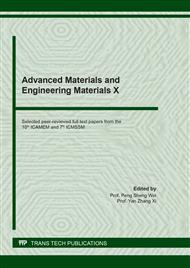p.3
p.9
p.14
p.20
p.26
p.31
p.39
Increasing the Efficiency of Production of Synthetic Cast Iron Castings
Abstract:
The main factor that determines the content of the development strategies of a modern foundry is the use of modern technological processes, especially melting technology. First of all, this applies to the production of iron castings, which make up 65% of the mass of all alloys. Since 2000, in Russia, there has been a sharp decrease in the amount of pig iron scrap, the cost of foundry and pig iron and the cost of their transportation have increased significantly. This led to an increase in material costs in the production of castings from synthetic iron, which was mainly obtained in crucible induction furnaces of industrial frequency (ICT). In addition, problems began to arise with the use of acidic lining as the cheapest and most durable, since an increased amount of steel scrap began to be used in the metal charge, and for this reason the melting temperature was raised above 1450 ° C. The durability of the lining has sharply decreased, and downtime associated with its replacement has increased. All this had a negative impact on the efficiency of the production of synthetic iron castings.
Info:
Periodical:
Pages:
3-8
Citation:
Online since:
November 2021
Price:
Сopyright:
© 2021 Trans Tech Publications Ltd. All Rights Reserved
Share:
Citation:


